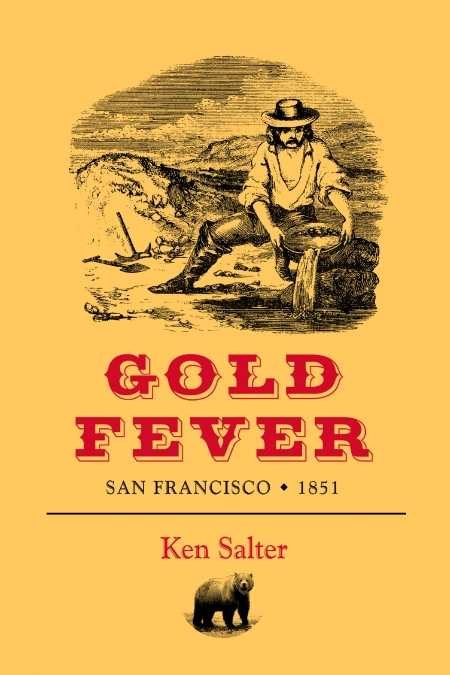
Gold Fever
The Gold Rush is over, and San Francisco teems with entrepreneurs of all stripes—shady and otherwise.
Set in 1851, after the height of the Gold Rush, Ken Salter’s novel on French emigrants portrays entrepreneurialism in San Francisco. The plot shuttles between Pierre Dubois, a Parisian who investigates a corrupt mining society, and his partner, Manon, a woman who embarks on a catering business. The latter story line dominates the book through the author’s ability to paint the city during the characters’ outings. A promising take on a reckless period—which encouraged opportunism and fanned anti-foreign sentiment—becomes a circuitous account of the American dream, with seemingly easy-to-surmount conflicts.
Salter, a professor emeritus at San Jose State University, has penned books on famous trials, including The Trial of Dan White, and previously directed a placer mining company. In Gold Fever, Pierre’s mining investigation—conducted through interviews—takes a backseat to the vibrant story of Manon, a spirited, humorous character who exemplifies one of the salient themes in the work: the unusual (for the 1850s) independence granted to women in California, allowing them to keep their own earnings as an incentive for moving to the frontier. Several chapters, with sometimes lengthy epicurean descriptions, feature the establishment of Manon’s wharfside food stand with the help of her associates, allowing camaraderie and ingenuity to fuse in the successful venture.
In contrast to the enlightened message behind Manon and her friends’ work, numerous observations of décolletage clutter the novel. Accounts of sexual enslavement in Chinese brothels are also undercut by facile dialogue, such as, “Hey, sailor boy, you wanna lookee-see?” and impact the characters little; they comment on the situation briefly in passing. Such scenes illustrate the dangerous atmosphere of the times without forwarding the plot.
The tendency to explain factual information through dialogue (such as tensions between Native Americans and settlers) rather than allowing it to subtly weave through the narrative also contributes to the sense that characters remain as bystanders to history. When characters do encounter problems that directly affect them—including the 1851 San Francisco fire, logistical concerns regarding travel and lodging, and excursions in the wilderness—money, bribes, a little truth-bending, luck, and the help of others frequently absolve them of the need to engage in significant struggles.
Despite the absence of deeper dimensions to the characters, Gold Fever offers a surprisingly light, optimistic tale of reinvention amid volatile social currents. The book is richly enhanced with intriguing newspaper facsimiles, engravings, maps, and related ephemera.
Reviewed by
Karen Rigby
Disclosure: This article is not an endorsement, but a review. The publisher of this book provided free copies of the book to have their book reviewed by a professional reviewer. No fee was paid by the publisher for this review. Foreword Reviews only recommends books that we love. Foreword Magazine, Inc. is disclosing this in accordance with the Federal Trade Commission’s 16 CFR, Part 255.
